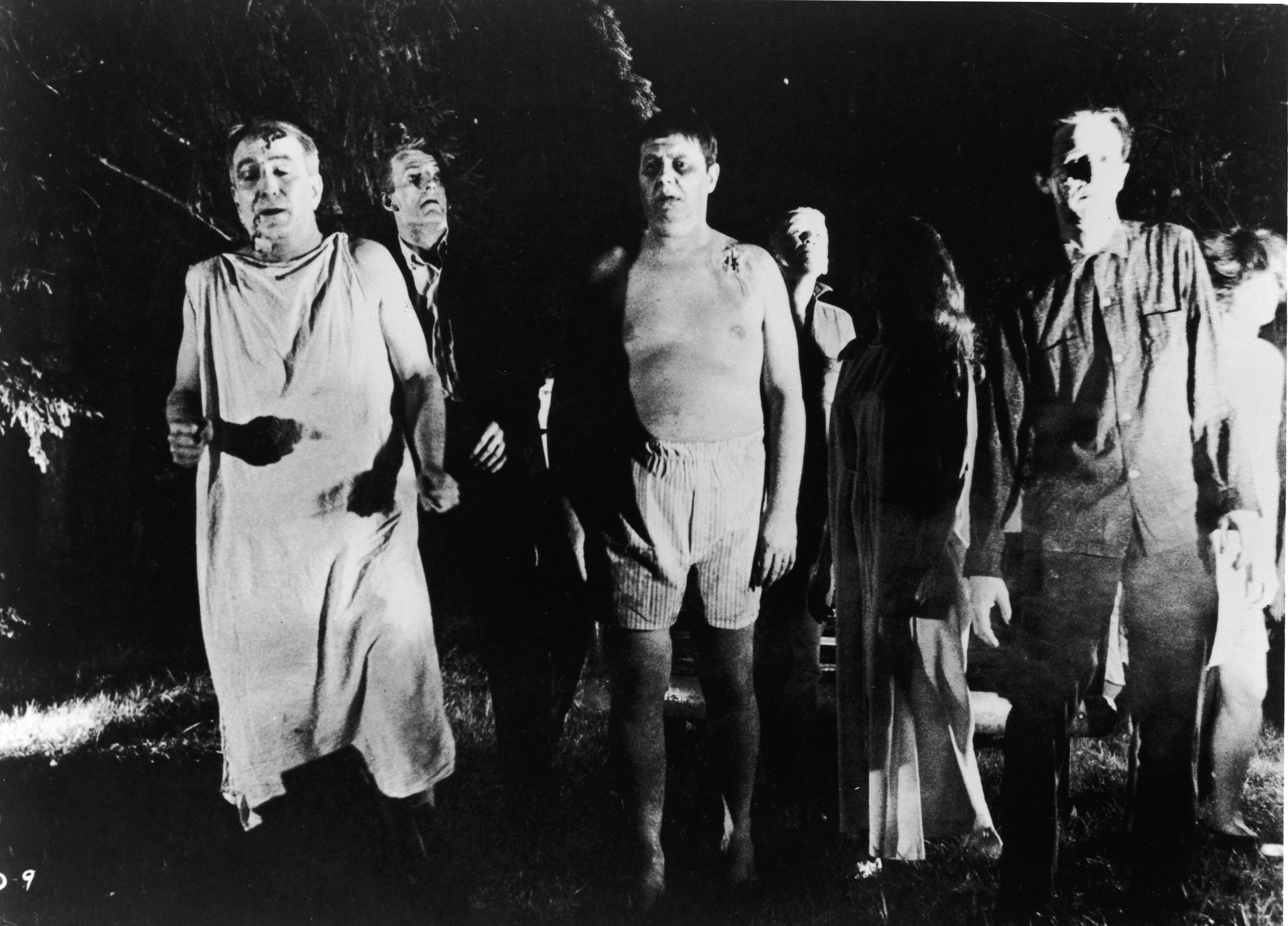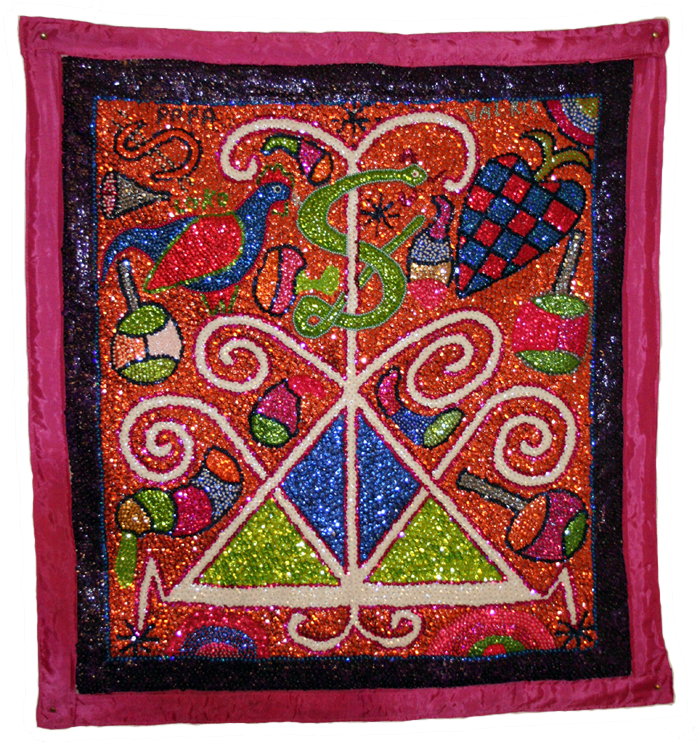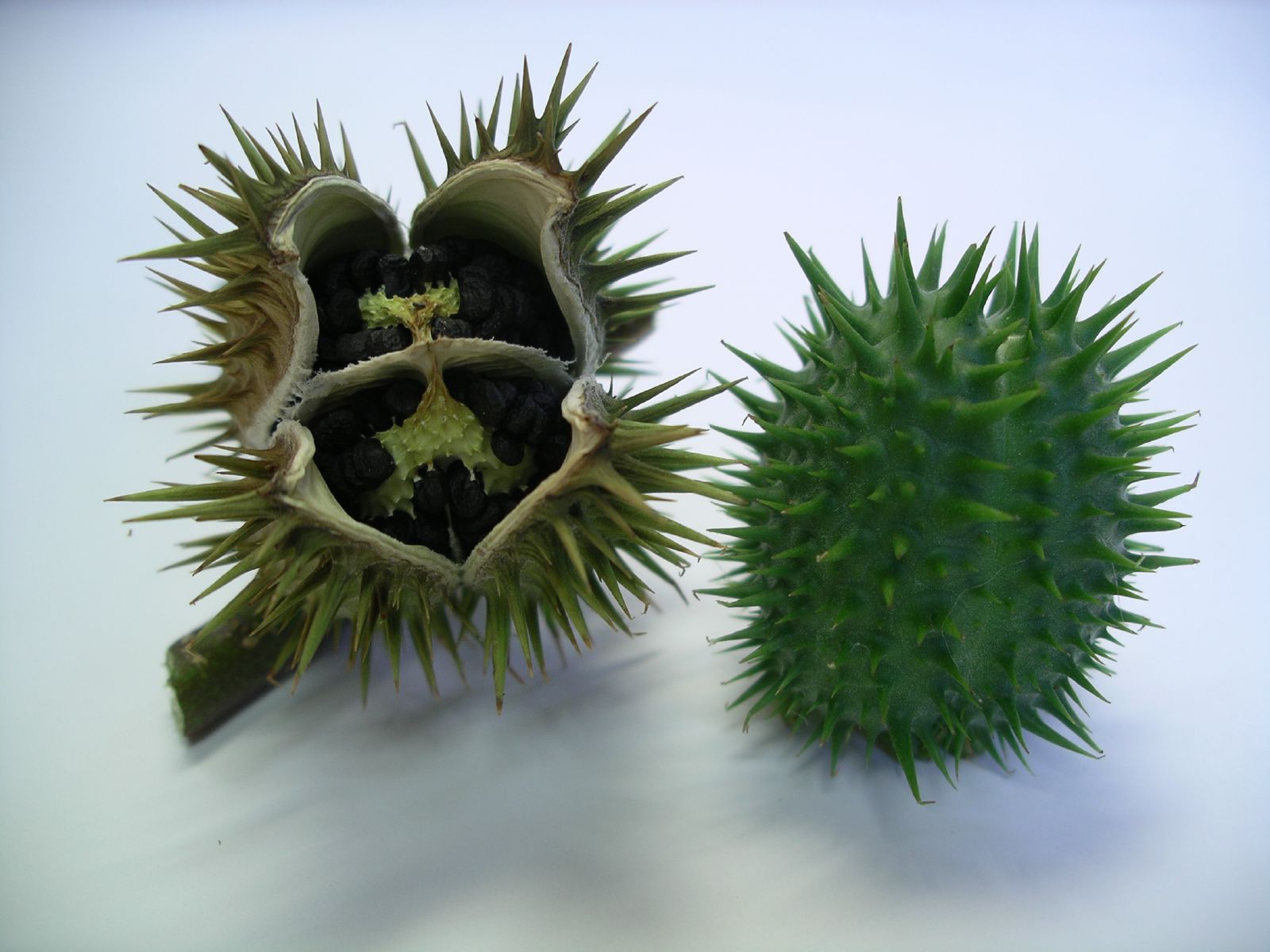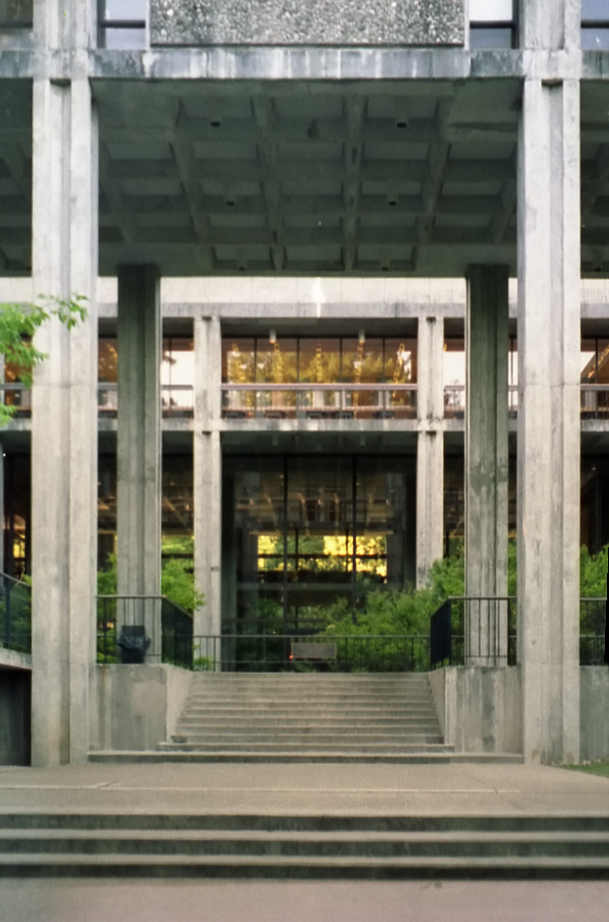|
Bokor
A bokor (male) ht, bòkò) or caplata (female) is a Vodou witch for hire who is said to serve the loa "with both hands", practicing for both good and evil. Their practice includes the creation of zombies and of 'ouangas', talismans that house spirits.Zombies (from 'Encyclopedia of Death and Dying' website, with added references there. Accessed 2008-06-15.)Report on Voodoo , from ''Self-Ascription Without Qualia: A Case-Study'' () – Chalmers, David J.; Department of Philosophy, |
Zombie
A zombie ( Haitian French: , ht, zonbi) is a mythological undead corporeal revenant created through the reanimation of a corpse. Zombies are most commonly found in horror and fantasy genre works. The term comes from Haitian folklore, in which a ''zombie'' is a dead body reanimated through various methods, most commonly magic like voodoo. Modern media depictions of the reanimation of the dead often do not involve magic but rather science fictional methods such as carriers, radiation, mental diseases, vectors, pathogens, parasites, scientific accidents, etc. The English word "zombie" was first recorded in 1819, in a history of Brazil by the poet Robert Southey, in the form of "zombi"."Zombie" in |
Clairvius Narcisse
Clairvius Narcisse (January 2, 1922 – 1994) was a Haitian man who claimed to have been turned into a zombie by a Haitian vodou, and forced to work as a slave. The hypothesis for Narcisse's account was that he had been administered a combination of psychoactive substances (often the paralyzing pufferfish venom tetrodotoxin and the strong deliriant ''Datura''), which rendered him helpless and seemingly dead. The greatest proponent of this possibility was Wade Davis, a graduate student in ethnobotany at Harvard University, who published two popular books based on his travels and ideas during and immediately following his graduate training. However, subsequent examinations (using tools of analytical chemistry alongside critical review of earlier reports) have failed to support the presence of the key active compounds in the supposed zombie preparation, which was central to the phenomenon and mechanism reported by Davis. Biography Narcisse admitted himself to the Schweitzer Hospi ... [...More Info...] [...Related Items...] OR: [Wikipedia] [Google] [Baidu] |
Houngan
Oungan (also written as ''houngan'') is the term for a male priest in Haitian Vodou (a female priest is known as a ('' mambo''). The term is derived from Gbe languages (Fon, Ewe, Adja, Phla, Gen, Maxi and Gun). The word hounnongan means chief priest. ‘'Hounnongan'' or ''oungans'' are also known as ''makandals''. Haitian Vodou is an African diasporic religion, which blends traditional Vodun from the Kingdom of Dahomey with Roman Catholicism. In similarity to their West African heritage, ''oungans'' are leaders within the community who run temples (''ounfò'') to respect and serve ''lwa'' (also written as ''loa'') alongside the Grand Maître (grandmaster or creator). ''Lwa'' are like spirits, encompassing a collection of Yoruba gods and Roman Catholic saints. ''Lwa'' manifest themselves in people during Vodou ceremonies through spirit possession. Each lwa has a distinct dance rhythm, song, sacrificial victuals, and clothing. ''Lwa'' choose ''oungans'' whilst they dream, where ... [...More Info...] [...Related Items...] OR: [Wikipedia] [Google] [Baidu] |
Haitian Vodou
Haitian Vodou is an African diasporic religion that developed in Haiti between the 16th and 19th centuries. It arose through a process of syncretism between several traditional religions of West and Central Africa and Roman Catholicism. There is no central authority in control of the religion and much diversity exists among practitioners, who are known as Vodouists, Vodouisants, or Serviteurs. Vodou revolves around spirits known as ''lwa.'' Typically deriving their names and attributes from traditional West and Central African divinities, they are equated with Roman Catholic saints. The lwa divide up into different groups, the ''nanchon'' ("nations"), most notably the Rada and the Petwo. Various myths and stories are told about these lwa, which are regarded as subservient to a transcendent creator deity, Bondye. This theology has been labelled both monotheistic and polytheistic. An initiatory tradition, Vodouists usually meet to venerate the lwa in an ''ounfò'' (temple), run ... [...More Info...] [...Related Items...] OR: [Wikipedia] [Google] [Baidu] |
Datura Stramonium
''Datura stramonium'', known by the common names thorn apple, jimsonweed (jimson weed), devil's snare, or devil's trumpet, is a poisonous flowering plant of the nightshade family Solanaceae. It is a species belonging to the '' Datura'' genus and '' Daturae'' tribe. Its likely origin was in Central America, and it has been introduced in many world regions. It is an aggressive invasive weed in temperate climates across the world. ''D. stramonium'' has frequently been employed in traditional medicine to treat a variety of ailments. It has also been used as a hallucinogen (of the anticholinergic/antimuscarinic, deliriant type), taken entheogenically to cause intense, sacred or occult visions.Schultes, Richard Evans; Albert Hofmann (1979). ''Plants of the Gods: Origins of Hallucinogenic Use'' New York: McGraw-Hill. . It is unlikely ever to become a major drug of abuse owing to effects upon both mind and body frequently perceived as being highly unpleasant, giving rise to a state ... [...More Info...] [...Related Items...] OR: [Wikipedia] [Google] [Baidu] |
Baron Samedi
Baron Samedi ( en, Baron Saturday), also written Baron Samdi, Bawon Samedi or Bawon Sanmdi, is one of the lwa of Haitian Vodou. He is a lwa of the dead, along with Baron's numerous other incarnations Baron Cimetière, Baron La Croix and Baron Criminel. He is the head of the Gede family of lwa; his brothers are Azagon Lacroix and Baron Piquant and he is the husband of Maman Brigitte. Together, they are the guardians of the past, of history, and of heritage. Portrayal Baron Samedi is usually depicted with a top hat, black tail coat, dark glasses, and cotton plugs in the nostrils, as if to resemble a corpse dressed and prepared for burial in the Haitian style. He is frequently depicted as a skeleton (but sometimes as a black man that merely has his face painted as a skull), and speaks in a nasal voice. The former President-for-Life of Haiti, François Duvalier, known as Papa Doc, modeled his cult of personality on Baron Samedi; he was often seen speaking in a deep nasal ... [...More Info...] [...Related Items...] OR: [Wikipedia] [Google] [Baidu] |
Abakuá
Abakuá, also sometimes known as Ñañiguismo, is an Afro-Cuban men's initiatory fraternity or secret society, which originated from fraternal associations in the Cross River region of southeastern Nigeria and southwestern Cameroon. Abakuá has been described as "an Afro-Cuban version of Freemasonry". The Cuban artist Belkis Ayón intensively investigated the Abakuá mythology in her prints. History Origins in Cuba Known generally as Ekpe, Egbo, Ngbe, or Ugbe among the multi-lingual groups in the region, it was believed that ''Ñáñigos'', as the members are known, could be transformed into leopards to stalk their enemies. In contemporary Haiti, where secret societies have remained strong, an elite branch of the army that was set up to instill fear in the restless masses was named The Leopards. Among the less mystical ''Ñáñigo'' revenges was the ability to turn people over to slavers. In Africa they were notorious operators who had made regular deals for profit with sl ... [...More Info...] [...Related Items...] OR: [Wikipedia] [Google] [Baidu] |
University Of California, Santa Cruz
The University of California, Santa Cruz (UC Santa Cruz or UCSC) is a public land-grant research university in Santa Cruz, California. It is one of the ten campuses in the University of California system. Located on Monterey Bay, on the edge of the coastal community of Santa Cruz, the campus lies on of rolling, forested hills overlooking the Pacific Ocean. Founded in 1965, UC Santa Cruz began with the intention to showcase progressive, cross-disciplinary undergraduate education, innovative teaching methods and contemporary architecture. The residential college system consists of ten small colleges that were established as a variation of the Oxbridge collegiate university system. Among the Faculty is 1 Nobel Prize Laureate, 1 Breakthrough Prize in Life Sciences recipient, 12 members from the National Academy of Sciences, 28 members of the American Academy of Arts and Sciences, and 40 members of the American Association for the Advancement of Science. Eight UC Santa Cruz alu ... [...More Info...] [...Related Items...] OR: [Wikipedia] [Google] [Baidu] |
Grand Bois (loa)
Grand Bois (meaning ''great wood'', also Grans Bwa, Bran Bwa, Ganga-Bois; ht, Gran Bwa) is an elemental, nature-oriented loa closely associated with trees, plants, and herbs in Haitian Vodou. Offerings to him include leaves and herbs, honey, and spiced rum. As a petro loa and loa of the wilderness, he can be fierce and unpredictable in some aspects.Torres, Rafael Agustí. "Loas y Vèvès del Vudú", pp. 19-20 (in Spanish) Grand Bois, Maître Carrefour (Master Crossroads), and Baron Cimetière (Baron Cemetery) form the triad of magicians. They represent the journey of life: ''Grand Bois'' represents the rich earth that you spring from and the dark woods you stumble through, ''Maitre Carrefour'' represents the various roads and paths you choose to travel on, and ''Baron Cimitère'' represents the end of the trip. Grand Bois is represented by Saint Sebastian Saint Sebastian (in Latin: ''Sebastianus''; Narbo, Gallia Narbonensis, Roman Empire c. AD 255 – Rome, Italia, ... [...More Info...] [...Related Items...] OR: [Wikipedia] [Google] [Baidu] |
Simbi
A Simbi (also Cymbee, Sim'bi, pl. Bisimbi) is a water spirit in traditional Kongo spirituality. In Haitian Vodoun context, they are a large and diverse family of serpents known as loa. Hoodoo In Central Africa's Kongo region, "...bisimbi inhabit rocks, gullies, streams, and pools, and are able to influence the fertility and well being of those living in the area." "What are bisimbi? They have other names, too. Some are called python, lightning gourd or calabash, mortar or a sort of pot. The explanation of their names is that they are water spirits ( nkisi mia mamba). The names of some of these minkisi are: Na Kongo, Ma Nzanza, Nkondi and Londa. There is a significant amount of Kongo culture that continues today in the African American community, because 40 percentage of Africans taken during thtransatlantic slave tradecame from Central Africa's Congo Basin. Simbi (Bisimbi, plural) spirits are also revered in the United States in the African American community in the practi ... [...More Info...] [...Related Items...] OR: [Wikipedia] [Google] [Baidu] |
Legba
Papa Legba is a lwa in Haitian Vodou, Winti and Louisiana Voodoo, who serves as the intermediary between the lwa and humanity. He stands at a spiritual crossroads and gives (or denies) permission to speak with the spirits of Guineé, and is believed to speak all human languages. In Haiti, he is the great elocutioner. Legba facilitates communication, speech, and understanding. He is commonly associated with dogs. Papa Legba is invoked at the beginning of every ceremony. Papa Legba has his origins in the historic West African kingdom of Dahomey, located within present-day Benin. Appearance He usually appears as an old man on a crutch or with a cane, wearing a broad-brimmed straw hat and smoking a pipe, or drinking dark rum. The dog is sacred to him. Legba is syncretized with Saint Peter, Saint Lazarus, and Saint Anthony. His ''veve'' incorporates a walking cane on the right side. Offerings to him typically include candy. Legba is a favorite Lwa of children due to his jolly, ... [...More Info...] [...Related Items...] OR: [Wikipedia] [Google] [Baidu] |
Kalfu
Kalfu (literally '' crossroads)'' is one of the petro aspects of Papa Legba, a lwa in Haitian Vodou. He is often envisioned as a young man or as a demon; his color is red and he favors rum infused with gunpowder. He is often syncretized with Satan. As his name indicates, he also controls the crossroads and has the power to grant or deny access to all other lwa, or spirits, and he allows the "crossing" of bad luck Luck is the phenomenon and belief that defines the experience of improbable events, especially improbably positive or negative ones. The naturalistic interpretation is that positive and negative events may happen at any time, both due to rand ..., deliberate destruction, misfortune, and injustices.Corbett, Bob. "Haiti: Short List of Loa." Haiti: Short List of Loa. N.p., n.d. Web. 20 Sept. 2013Webster.edu/ref> Footnotes Notes References Crossroads mythology Fortune gods Liminal deities Magic gods Haitian Vodou gods Lunar gods {{Deity-stub ... [...More Info...] [...Related Items...] OR: [Wikipedia] [Google] [Baidu] |




